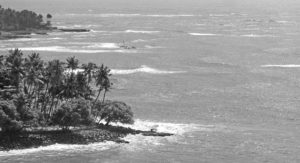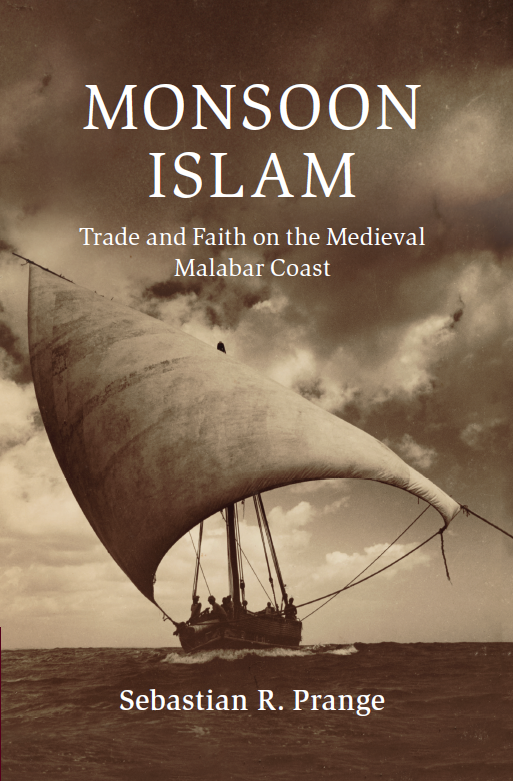Sebastian R. Prange

The histories of Kerala and the wider Indian Ocean world are inseparable: they have shaped one another like waves contour the shore. Evidence of this intersection of regional and oceanic history comes in many forms, such as the exchange of material goods, the diffusion of cultural practices, or the migration of people. One particularly salient aspect of this historical interplay between land and sea can be found in the evolution of Islam. As Muslim merchants established trading communities in all the flourishing port cities of what they referred to as “Malabar”, Islamic beliefs and practices were carried along with them. Muslims on the medieval Malabar Coast observed the principal acts of their faith, the so- called pillars of Islam, in the same manner as Muslims everywhere: they professed their belief in the one god with Muhammad as his messenger, performed the obligatory prayers, gave alms, fasted during the holy month, and strove to perform the pilgrimage to Mecca. In other ways, however, they diverged. For example, they produced new interpretations of Islamic law designed to meet the specific needs of their heterogeneous communities; many prayed in buildings that looked like Hindu temples, and some worshipped saints outside of the Islamic tradition; some practised matrilineality contrary to the otherwise staunchly agnatic Islamic tradition; they professed new understandings of religiously sanctioned warfare (jihad), and to that end even re- defined what constitutes the “Muslim world” (dar al-Islam).
In a recent book, I describe this historical trajectory as “Monsoon Islam”. Its central argument is that between the twelfth and sixteenth centuries of the Common Era, a particular form of Islamic thought and practice emerged in the cosmopolitan port cities of the Indian Ocean trading world. This Monsoon Islam was shaped by merchants not sultans, forged by commercial imperatives rather than in battle, and defined by the reality of Muslims living within non- Muslim societies. To be sure, Monsoon Islam is by no means a discrete school of Islamic philosophy: it is an etic category that does not represent a deliberate or coherent set of doctrines. Instead, it describes how Islam was realized by Muslims in the context of the trading world of the premodern Indian Ocean: not as abstract principles but in specific acts, attitudes, and ideas that responded to concrete historical situations and challenges. Importantly, these acts, attitudes, and ideas, however contradictory they may appear at times, were made sense of and articulated in terms of Islamic precept, history, and law – in other words, they were understood by these Muslims as Islam.
The world of Monsoon Islam was first and foremost a commercial realm, and many of its chief characteristics were defined by the imperatives of doing business in settings that were unfamiliar (in the sense of kinship ties), foreign (in the sense of political boundaries), and alien (in the sense of cultural difference). Embedded within these complex trade relations across the ocean were many other forms of exchange: of texts, for instance, but most importantly of people with their beliefs, customs, connections, and rivalries. At its core, Monsoon Islam was the product of the tension between the distant and the local, between these Muslims’ role in far-flung trading networks and an Islamic cosmopolis on the one hand and, on the other, their need to negotiate the specific social, economic, and political conditions of particular trading locations. Muslim trading communities were interlinked not only by mutual commerce but also by the need for religious and political institutions that could address the particular needs of these diasporic settlements.
Many of these institutions continue to define the character and structures of Islam across monsoon Asia. One example of this is Islamic law, which is usually seen as the defining hallmark of the influence that Arabic high culture had on the religion. But Muslims in maritime Asia found themselves confronted by issues that were not addressed in the classical legal texts of Islam; so Muslim judges and legists in India and elsewhere began to issue their own legal opinions (fatawa) to address the specific problems faced by Muslims living in non-Muslim societies, a context that was simply not envisaged by the standard treatises. That there was a real need for such legal commentaries that addressed the everyday matters of social life within a non- Islamic society – that is, in a diaspora setting – is evident from the fact that such texts written in were almost immediately taken up by other Muslim communities across the Indian Ocean who faced a similar situation. For example, a commentary on Islamic law composed in Kerala was quickly adopted in Java; in fact, in a legacy of these trans-oceanic, inter-diasporic exchanges, this same legal text continues to be used by Muslim judges in Indonesia even today.
This example highlights that the spread of Islam across the Indian Ocean was not a unilateral transfer of a stable, fully formed prototype into new settings. To translate is to create anew: Monsoon Islam is the product of the creative, cumulative effort to translate Islam (as a set of religious beliefs, legal norms, and social practices) into new settings. This effort was rooted in the precepts of a universalist faith and its cosmopolitan idiom, but needed to be adapted and justified in ways that were intelligible and acceptable locally. In this coming together of the ocean – the universal precepts of the faith – and the shore – its evolution and contouring in specific local contexts – that we see Kerala at the very heart of a historical process that has shaped the lived experience of Muslims and non-Muslims alike.
(Monsoon Islam: Trade & Faith on the Medieval Malabar Coast by Sebastian R. Prange is available in hardcover and as an e-book from Cambridge University Press. A Malayalam translation is in preparation by Other Books (Kozhikode).)
